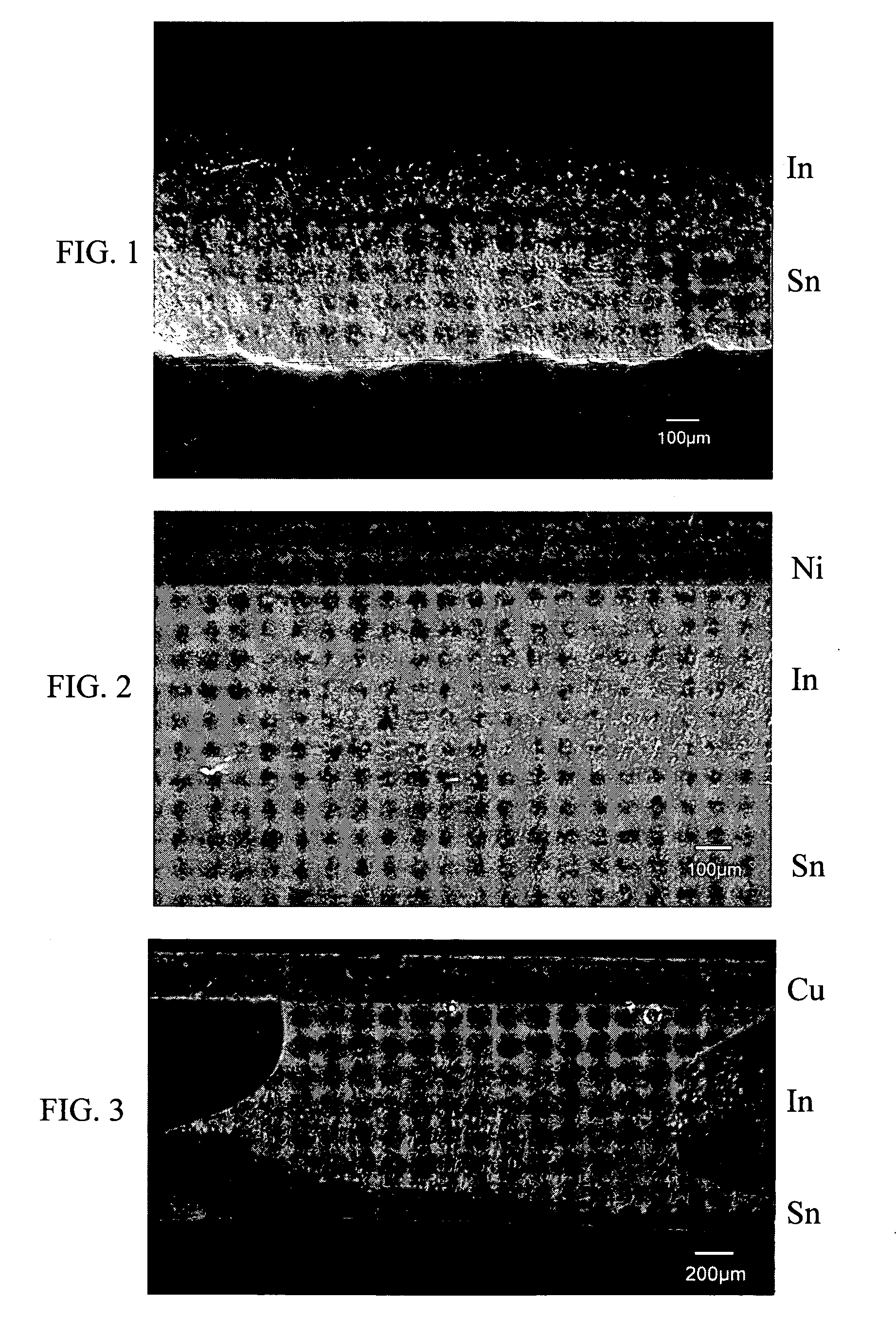Soldering method and solder joints formed therein
a solder joint and soldering method technology, applied in the direction of soldering apparatus, manufacturing tools, transportation and packaging, etc., can solve the problems of increased manufacturing process and energy cost in the electronic industry, increased cost of sn—in solder, and high cost of indium solder, etc., to achieve good wetting, good fatigue resistance, and low melting point
- Summary
- Abstract
- Description
- Claims
- Application Information
AI Technical Summary
Benefits of technology
Problems solved by technology
Method used
Image
Examples
example 1
[0046] An acidic electroplating solution of indium sulfate (0.1M) was used to perform plating of indium on the surface of a tin substrate by using Pt as anode, a current density of 3.3 A / dM2, and an operation temperature of 40° C. After one hour, a uniform indium layer with a thickness of about 100 μm was obtained, as shown in FIG. 1.
example 2
[0047] An In-plated tin substrate similar to Example 1 was used to perform a reflow soldering with a nickel substrate at 170° C. The thickness of the indium layer was 500 μm, and the reflow time was 2 minutes. A sound solder joint was formed. A liquid phase reaction portion was seen at the interface between indium and tin. During the soldering process, a liquid phase of indium was formed, and a portion of the tin was also dissolved. A multi-phase region was observed after solidification. Said multi-phase region was a region including said liquid phases of indium and tin, and an interface-reaction region prior to solidification by cooling. As shown in the metallic phase photo of FIG. 2, the multi-phase region is about 80 μm in thickness.
example 3
[0048] An In-plated tin substrate similar to Example 1 was used to perform a reflow soldering with a copper substrate at 170° C. The thickness of the indium layer was 500 pin, and the reflow time was 5 minutes. A sound solder joint was formed. A liquid phase reaction portion was seen at the interface between indium and tin. During the soldering process, a liquid phase of indium was formed, and a portion of the tin was also dissolved. A multi-phase region was observed after solidification. Said multi-phase region was a region including said liquid phases of indium and tin, and an interface-reaction region prior to solidification by cooling. As shown in the metallic phase photo of FIG. 3, the multi-phase region is about 80 μm in thickness.
PUM
| Property | Measurement | Unit |
|---|---|---|
| melting point | aaaaa | aaaaa |
| melting point | aaaaa | aaaaa |
| melting point | aaaaa | aaaaa |
Abstract
Description
Claims
Application Information
 Login to View More
Login to View More - R&D
- Intellectual Property
- Life Sciences
- Materials
- Tech Scout
- Unparalleled Data Quality
- Higher Quality Content
- 60% Fewer Hallucinations
Browse by: Latest US Patents, China's latest patents, Technical Efficacy Thesaurus, Application Domain, Technology Topic, Popular Technical Reports.
© 2025 PatSnap. All rights reserved.Legal|Privacy policy|Modern Slavery Act Transparency Statement|Sitemap|About US| Contact US: help@patsnap.com


